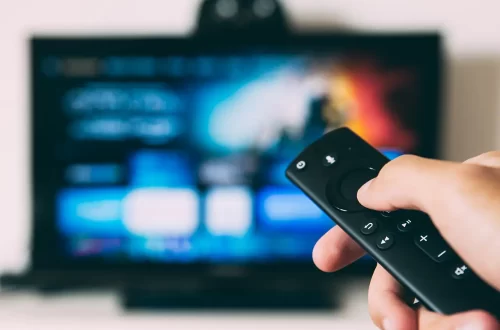
Unlock Financial Freedom: The Power of Money Mindfulness
Imagine a life where financial stress is a thing of the past, and every money decision you make is filled with confidence and clarity. This is the promise of Money Mindfulness. In our fast-paced, consumer-driven world, it’s easy to feel overwhelmed by financial pressures. But by embracing the principles of Money Mindfulness, you can transform your relationship with money. This approach encourages you to be present and intentional with your finances, leading to a more peaceful and empowered financial life. Let’s explore how Money Mindfulness can guide you towards financial freedom and inner peace.
So, What Exactly is Money Mindfulness?
Money Mindfulness is a comprehensive approach to managing your finances that combines the principles of mindfulness with financial decision-making. At its core, it’s about being fully present and aware of your financial situation, making intentional choices, and cultivating a healthy relationship with money. Instead of reacting impulsively to financial stressors, Money Mindfulness encourages you to pause, reflect, and make decisions that align with your long-term goals and values.
You might be thinking that “mindfulness” sounds like New Age mumbo-jumbo, but it’s actually a well-researched practice with proven benefits. Studies have shown that mindfulness can reduce stress by up to 30% and improve focus and decision-making skills¹. When applied to finances, it helps you become more aware of your spending habits, recognize emotional triggers related to money, and develop a sense of gratitude and contentment with what you have.
By integrating mindfulness into your financial life, you can reduce stress, improve financial stability, and achieve a sense of inner peace. Money Mindfulness is not just about budgeting or saving; it’s about transforming your entire mindset towards money, leading to more thoughtful and fulfilling financial experiences.
Example:
Consider John, a busy professional who often found himself stressed about his finances. He would frequently make impulsive purchases to cope with his stress, only to feel guilty later. After learning about Money Mindfulness, John decided to change his approach. He started by tracking his spending and identifying patterns. He noticed that he often spent money on things he didn’t truly need, especially when he was feeling anxious.
John began practicing mindfulness techniques, such as taking a few deep breaths before making any purchase and asking himself if the item was something he truly needed or just a temporary fix for his stress. Over time, he became more aware of his spending habits and started making more intentional choices. This not only helped him save money but also reduced his financial stress and improved his overall well-being.
Expert Insight:
As financial expert Dave Ramsey says in his book The Total Money Makeover, “A budget is telling your money where to go instead of wondering where it went.” While this quote emphasizes the importance of budgeting, it also captures the broader essence of Money Mindfulness. It’s about being intentional and proactive with your finances, not just in budgeting, but in every financial decision you make. By applying mindfulness to your financial life, you gain control and clarity, leading to greater peace of mind and financial well-being.
Ways to Practice Money Mindfulness
1. Awareness of Spending Habits
Start by being aware of your spending habits. Track where your money goes and see if it aligns with your priorities. Identify impulsive or emotional spending patterns and reflect on their impact on your financial well-being.
Activity:
What to Do: Keep a daily journal where you write down every purchase you make.
Why: This helps you become aware of your spending habits and identify patterns. Review your entries weekly to see where your money goes and if it aligns with your priorities.
2. Connecting Money to Values
Next, link your financial decisions to your core values and life aspirations. Ask yourself if each purchase or investment aligns with what truly matters to you. This connection fosters a sense of purpose and fulfillment.
Activity:
What to Do: Create a list of your top five values. Values are the principles or standards that are most important to you in life. Examples include family, health, education, sustainability, and personal growth. Before making a purchase, check if it aligns with these values.
Why: Aligning your spending with your values ensures that your financial decisions reflect what truly matters to you. For instance, if one of your values is health, you might prioritize spending on nutritious food or a gym membership. If sustainability is important, you might choose eco-friendly products even if they cost a bit more.
This practice fosters a sense of purpose and fulfillment, as your money is spent in ways that support your core beliefs and long-term goals. It also helps you avoid unnecessary purchases that don’t contribute to your overall happiness and well-being.
3. Gratitude for Abundance
Furthermore, acknowledge the abundance in your life and be thankful for what you have. Practicing gratitude shifts your focus from what you lack to what you possess. This fosters contentment and a balanced approach to finances.
Activity:
What to Do: Start a gratitude journal focused on your finances. Each day, write down three things you’re grateful for related to your financial situation. These could be anything from having a steady income, being able to save money, or finding a good deal on something you needed.
Why: Practicing gratitude shifts your focus from what you lack to what you have. This positive mindset can reduce financial stress and boost your happiness. By regularly acknowledging the good in your financial life, you build a sense of satisfaction and thankfulness.
This helps you see the plenty you already have, leading to more mindful and intentional financial decisions. It also encourages you to celebrate small wins and progress, reinforcing positive financial behaviors.
4. Curbing Impulse Purchases with Style
Impulse purchases can derail your financial goals. Therefore, when faced with an urge to buy, pause and practice mindful consideration. Ask yourself if the purchase is necessary, if it aligns with your values, and if it brings genuine joy and utility to your life.
Activity:
What to Do: Implement a 24-hour rule for non-essential purchases. Wait 24 hours before buying to make sure you really need and want it. This gives you time to carefully consider your spending.
Why: This pause helps curb impulse purchases and ensures your spending aligns with your values and needs. By waiting, you give yourself time to think about whether the purchase is necessary or just a fleeting desire. This can prevent buyer’s remorse and help you save money for things that truly matter. It also encourages more thoughtful spending habits, leading to better financial decisions and a healthier relationship with money.
5. Aligning Spending with Goals
A financially aware gentleman allocates his resources purposefully. Thus, align your spending decisions with your short-term and long-term financial goals. Whether it’s saving for a down payment, funding a passion project, or building an emergency fund, mindful spending empowers you to make progress towards your aspirations.
Activity:
What to Do: Set specific financial goals and create a vision board. Use images, words, and quotes that represent your goals. Vision boards aren’t just for women—anyone can benefit from them! Place it somewhere you’ll see daily. Regularly review and update it to keep your goals fresh in your mind.
Why: A vision board keeps your financial goals front and center. Seeing your goals daily helps you stay motivated and focused. It reminds you why you’re making mindful spending choices. This practice can boost your commitment to saving and investing. It also helps you visualize your progress and celebrate small wins along the way. By keeping your goals visible, you’re more likely to make decisions that support your financial aspirations.
6. Regular Financial Reflection
Finally, cultivate the habit of regular financial reflection. Set aside time each month to review your expenses, savings, and investment progress. Celebrate your achievements and identify areas for improvement. Adjust your financial plan as needed while keeping a clear vision of your financial destination.
Activity:
What to Do: Schedule a monthly financial review. Set aside time to go over your expenses, savings, and investments. Look at your budget and see if you’re on track with your financial goals. Make adjustments as needed.
Why: Regular reviews help you stay aware of your financial situation. They allow you to celebrate your achievements and spot areas for improvement. By reflecting on your spending and saving habits, you can make better decisions moving forward. This practice keeps you accountable and ensures you’re making progress towards your goals. It also helps you identify any unnecessary expenses and find ways to save more money.
Take Control of Your Financial Future with Money Mindfulness
Practicing money mindfulness can transform your financial life. By being aware of your spending and aligning it with your values, you gain control over your finances. This approach reduces stress and increases satisfaction.
Start small. Implement one or two activities from this article. Notice the positive changes in your financial habits. Celebrate your progress, no matter how minor it seems. Remember, financial freedom is a journey. Each mindful decision brings you closer to your goals. Stay committed and patient. Your efforts will pay off. Engage in these activities regularly. They will help you build a healthier relationship with money. Embrace money mindfulness and watch your financial well-being improve.
Take action today. Your future self will thank you.
¹ Source: American Psychological Association, “The Benefits of Mindfulness” (2020)






